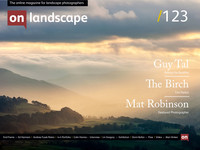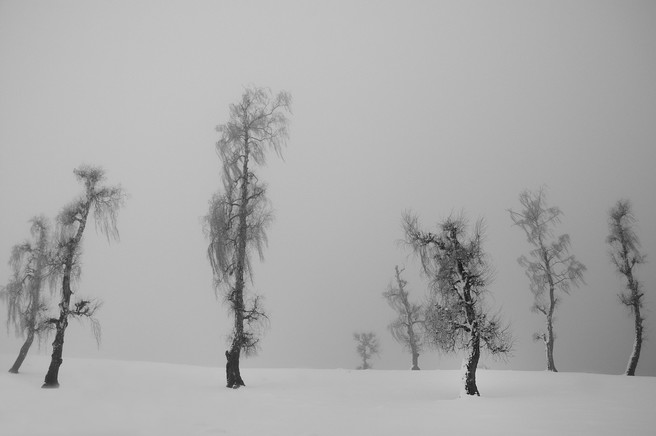The Ruler of the Mountain

Tim Parkin
Amateur Photographer who plays with big cameras and film when in between digital photographs.
Beneath you birch with silver bark
And boughs so pendulous and fair,
The brook falls scattered down the rock:
and all is mossy there.- Samuel Taylor Coleridge
The birch tree must be the most recognisable of our native trees. It’s silver bark makes it stand out from quite a distance and it’s shocking lemon and lime autumnal colours are as close as we brits get to the iconic aspens. But unlike the aspen, which stands in arrays of clones, the birch shows a broad range of character depending on its habitats and can range from craggy and dwarvish to balletically graceful.
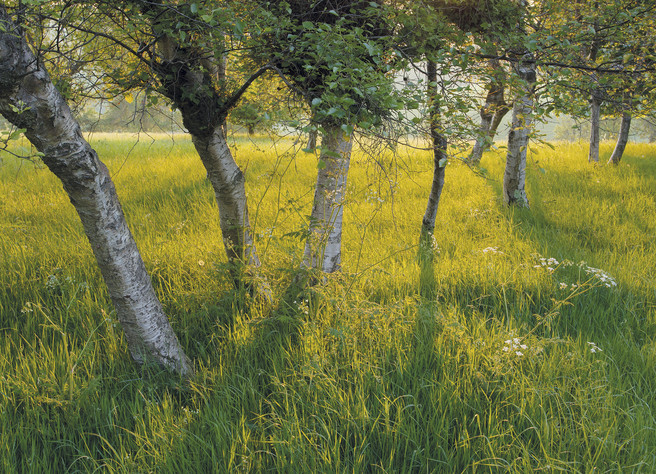
Birch Shadows, Yorkshire Wolds, Paul Moon, website
The birch is one of our woodland's winners and was the first species to appear after the ice age. It’s fine and small seeds travel far and wide and it is well known as a pioneer species; Downy Birch, in particular, would have been one of the first trees to grow in new woodland. Birch tree roots are known as one of the most aggressive species in searching for water which allows them to grow on craggy edges and rocky slopes (and can cause urban specimens to do a great deal of damage to buildings and infrastructure).
In fact, it was Birch that showed up first at the start of Britain’s wildwood after the last major ice age about 12,000 years ago. The birch would have appeared in clumps here and there but Birch have a self-limiting character, they can’t grow in shade and hence once they form small ‘woods’ they typically are replaced by Pine, Oak, Hazel, Alder and Lime.
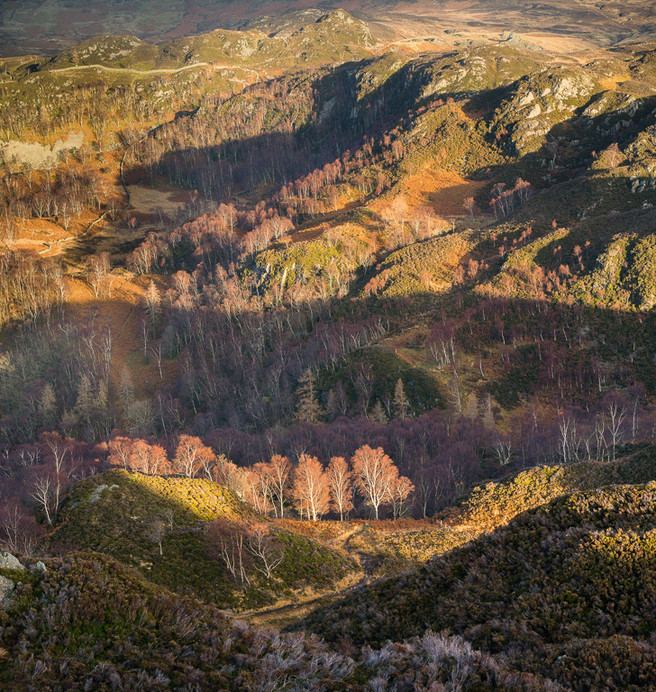
From King's How, Borrowdale, Joe Cornish website
As an aside, the term “Silver” Birch is a modern invention by Alfred Lord Tennyson and less than 200 years old, prior to that, it was simply the ‘common birch’ (or Gemeine Birke in Gaelic).
The Scottish name for Birch is “Beith” (pronounced “bay”) and you’ll see many hill and place names include this and also the old English for Birch is Bircen, Birk or Berk - hence Birkby, Birkenhead (“headland overgrown with birch”).
Shadows of the silver birk,
sweep the green that folds thy grave.
Let them rave.
- A Dirge, 1832. Alfred Lord Tennyson
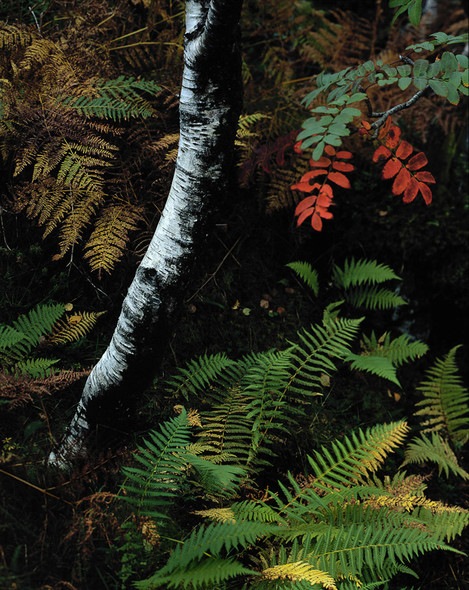
Birch and Rowan, Ballachulish, Tim Parkin website
Folklore
The birch provides one of the first signs of life in spring and I would think that it is for this reason that in Celtic folklore the birch represents renewal and purification and it is also channeler of emotion and the bringer of hope and new beginnings. Young couples would wander off into the woods on Beltane, the Gaelic May day festival, to make like nature. The church co opted some of the spirit of this and brought birch trunks or ‘May Poles’ into town for more puritanical celebration. Many pagan gods were associated with Birch including the Norse gods Freya and Frigga but also the Anglo Saxon goddess of spring “Eostre/Ostara” (Yes! Easter! The christian celebration is more rightly called Passover).
Folklore and herbalism credit different parts of the birch with a variety of medicinal properties. The leaves are diuretic and antiseptic, and an effective remedy for cystitis and other urinary tract infections. They were also used to dissolve kidney stones and relieve rheumatism and gout. The sap (as wine or cordial) similarly prevents kidney and bladder stones, treats rheumatism, and can be used to treat skin complaints. The bark is said to ease muscle pain if applied externally.
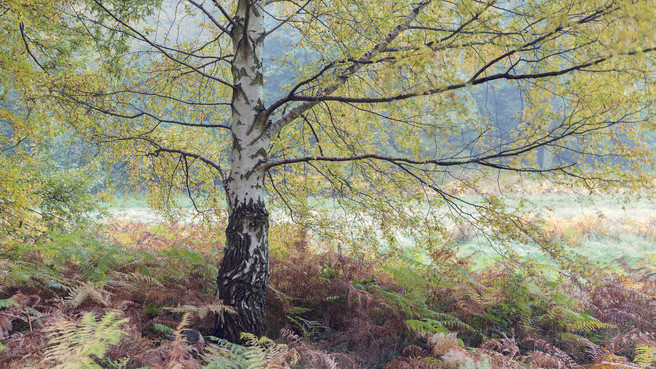
Mausoleum Woods Birch, Mausoleum Woods, Lincolnshire, Louis Murphy, Flickr
The birch bears fine leaves on shining boughs, it
grows pale green and glittering, the flower of the
trees in bloom, fair-haired and supple-limbed, the
ruler of the mountain.
The winds call, they shake gently, she bends her
boughs low in sport; smooth, straight and
white-barked, trembling she speaks a language, a
bright token, a good mystery, blessing my people.
Evening grows dark with clouds, the lightning
flashes, the fine leaves fly free, but firms and
faithful the white birch stands bare and waits,
ruling the mountain.
Bagma Bloma, JRR Tolkein
As a source of useful materials
Birch wood is easily carved and turned and provides a cheap source of smooth grained wood. It’s commonly used in plywood and much of it is sourced in Scandinavian countries or Russia.
Birch bark is an incredibly flexible resource. It is thought that the name “birch” may have come from the Sanskrit word bhurga meaning a 'tree whose bark is used to write upon'. It has undoubtedly been used for this purpose though but it has also been used for making baskets, roofs, gaiters, wrapping paper, and much more.
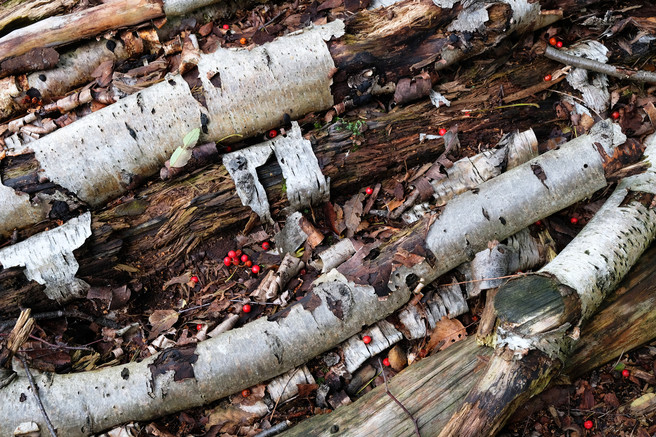
Decaying birch logs, Kirkby Moor nature reserve, Lincolnshire, Peter Roworth, website
The bark can also be cooked in the absence of air and a tar extracted (Oleum Rusci) which contains creosote like compounds and has been used to treat leather and also as a glue to mount arrowheads and the like and also an antibacterial and antifungal agent.
Canoes and coracles were made out of birch and birch bark with the edges sealed in birch tar (there is a great Ray Mears episode showing just such a creation). These boats were very light and manoeuvrable.
In Iceland Birch is also made into a schnapps called “Björk” (yes she is named after the Birch tree!) and even includes a twig from a birch tree. In contrast to Brennivin (the Icelandic drain cleaner), Björk is smooth and syrupy and highly recommended (and hence quite dangerous).
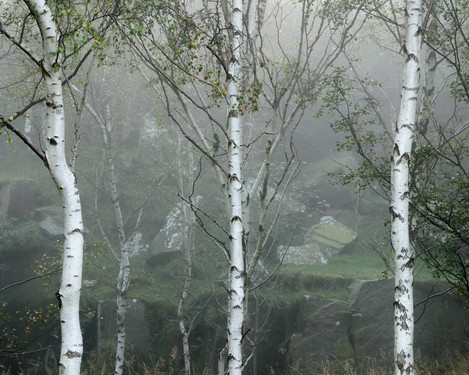
Birches, Rocks, Lichen, Bole Hill, Peak District, Eli Pascall-Willis, website
Punishment
The birch was a common method of punishment or control. A bundle of birch rods were called a fasces and were used as a representation of power in Etruscan and then roman government and went on to be a symbol for the fascist movement (although they also appear in the oval office and may other senate and national guard symbols in the house of representatives). The birch (typically a bound collection of small birch branches) was used as punishment for hundreds of years and until the late 1960’s for minor and major crimes and the Isle of Man carried out its last ‘birching’ in 1974.
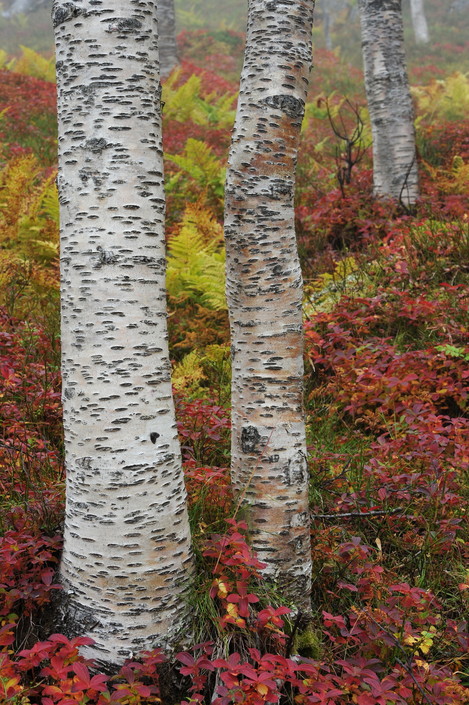
Bunchberry & Birch, Kvaløya, Arctic Norway, Harvey Lloyd-Thomas, website
The Tree
In Great Britain, the Birch can be either Downy or Silver in the UK (and occasionally dwarf) and is a relatively short-lived tree, 80 years on average. If you want to differentiate the Silver and Downy varieties here are some of the aspects you could look at
| Silver Birch | Downy Birch | |
|---|---|---|
| Appearance | Tall and langourous | Pert and can look naturally coppiced (many trunks) |
| Geographic | Common across most of Europe but peter | Not so common, but is the most northerly tree species and occurs frequently in the arctic |
| New Branches | Downy green | Shiny maroon and warty |
| Environment | Moorland | Prefers a wet environment |
| New Leaves | Waxy and darker, red tinge at first then a bluey green later. | Downy grey underside |
| Leaf Shape | More pointy with a concavity in the end before the point. Commonly flat/straight bottomed. | More rounded bottom with less point on top. |
| Leaf Serrations | Large serrations with smaller serrations in between | Single set of serrations |
| Bark | Very silver with ‘eyes’ and diamond black ‘crust’ at base | Greyer bark with no ‘diamonds’ |
| Stature | Tall but droopy top | More shrub lie with no droop |
| Autumn Colour | Yellow | Orangey Yellow |
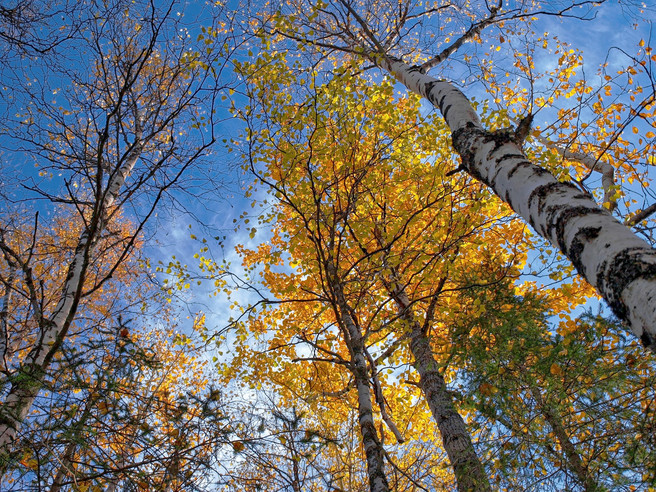
Alaska, Ian Meades website
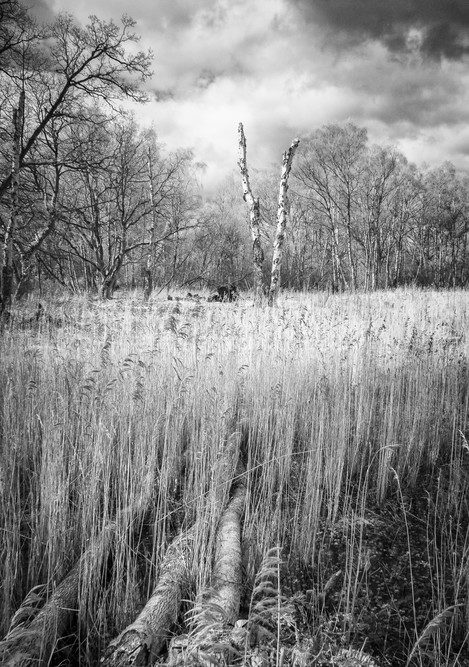
Broken, Foulden Common, Norfolk, Paula Cooper, website
Birch has a particular relationship with funghi. A range of funghi including Fly Agaric (that poisonous red mushroom from fairy tales) form a mycorhizzal partnership with Birch to help the tree preserve nutrients (nitrogen and phosphorous for example) and can help process decomposing matter. Birch are often invaded by parasitic funghi including the bracket fungus or hoof fungus (also known as tinder fungus that gift for firestarting) which reveals itself once the tree dies or is wounded.
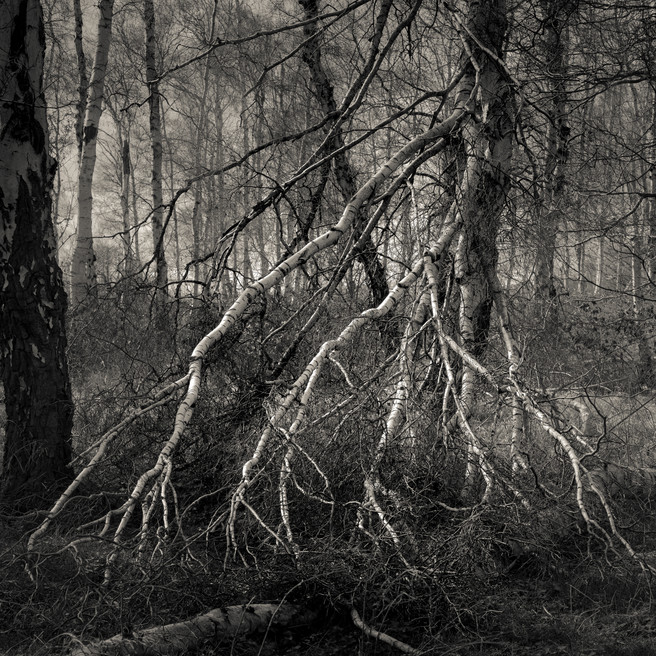
Fallen, Holme Fen, Cambridgeshire, Robin Jones, Facebook
Sleeping Beauty
A study of birch trees produced the peculiar conclusion that trees 'sleep'. When monitored overnight a birch trees branches dropped by as much as four inches. The explanation seems to be that the tree uses energy to keep it's sap pressure high which during daylight pays off with more energy intake from the sun. At night, with no payoff, it makes sense to let the sap pressure go a bit and hence the droopiness. Here's a New Scientist article on the phenomenon.
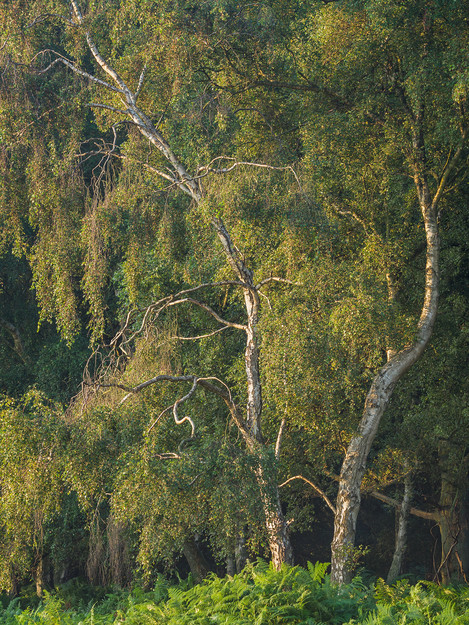
Sisters, Berkhamsted Common, Hertfordshire, Damian Ward, Flickr
Is it a bird's nest? Not necessarily.
Birches often appear to have large bird's nests in them but these are in fact a type of growth deformity caused by fungus, insects, parasites or mites. These so-called witch's brooms form naturally and aren't necessarily bad for the tree and also play host to a range of insects that wouldn't live elsewhere and they are occasionally used as homes for some species of squirrel.
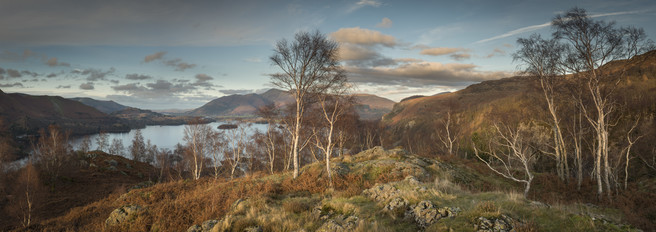
Shepherds Crag Panorama, Shepherds Crag, Lake District, Rob Oliver, website
Photographing Birch
Photographing birch is one of my favourite activities and, judging by the number of submissions we have had, it’s one of yours too. Birch just seem so photogenic all year around. In the winter the silver of the trunks and the hint of red/brown of the fragile branches provides a graphic component in many photographs, in spring the new growth of the branch colour of silver birch, in particular, can colour the whole landscape and the early spring leaves are about a vibrant and refreshing as it gets. Even in summer the foliage still retains some colour interest even when the rest of the woods enter their overripe green phase and they provide a wonderful contrast to the heather when it arrives. Then in Autumn they start to really show off and provide guaranteed colour, at least before the winds arrive in late October. The colour in autumn is also quite varied because of the diverse range of habitats they live in. Some craggy birch may show autumn colour as early as the start of October and sheltered birch near rivers and wet ground may hold onto a vestige of colour until December.
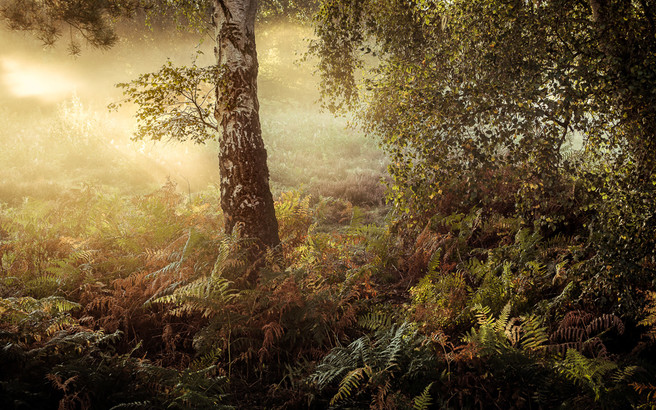
Hushed, Knettishall Heath in Suffolk, Lee Acaster website
One of silver birch’s big wins for the photographer is that they nearly always have a degree of space around them. Because they are a pioneer species you will typically find them on the verges and edges of landscape types. For this reason, you can usually find a birch to go with whatever landscape you are looking at.
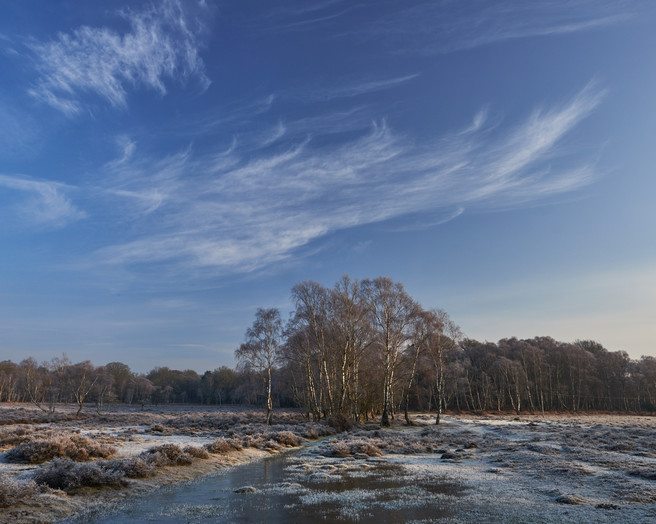
Tolcher Trees - Way below zero, New Forest, Baxter Bradford, website
Here are a few ideas for images that you could think about next time you meet a birch
The Edge of a Forest of Birch
Birch rarely forms large forests and you’ll really only see this sort of grouping where a new forest is forming. Birch will generally be taken over by Oak after a decade or so so make the most when you can. Try visiting in early spring to capture that shocking brown/magenta glow of the new growth or early autumn for a lemon and lime spread across the landscape.
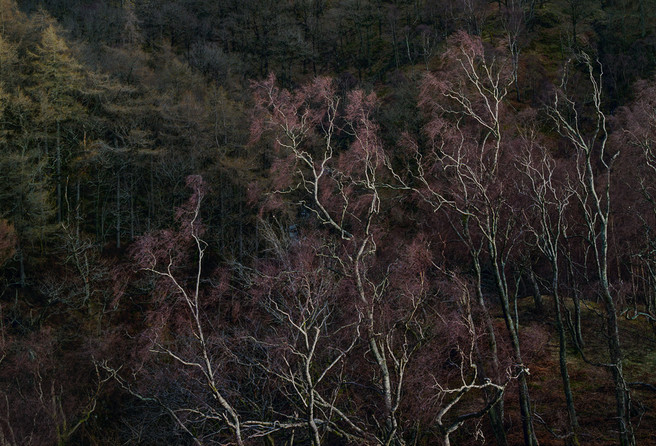
Shepherd's Crag, Borrowdale, Tim Parkin website
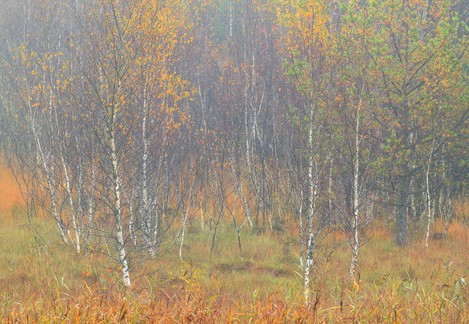
Doors of Durin, Munich (Starnberg) in Germany, Prashant Khapane, website
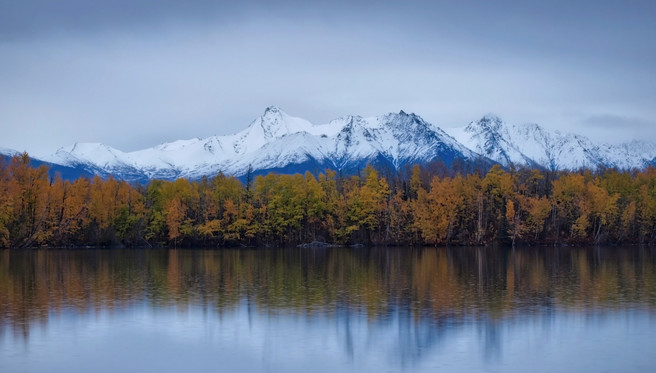
Mostly birch trees across the lake, Bradley Lake, Wasilla, Alaska, Ian Meades, website
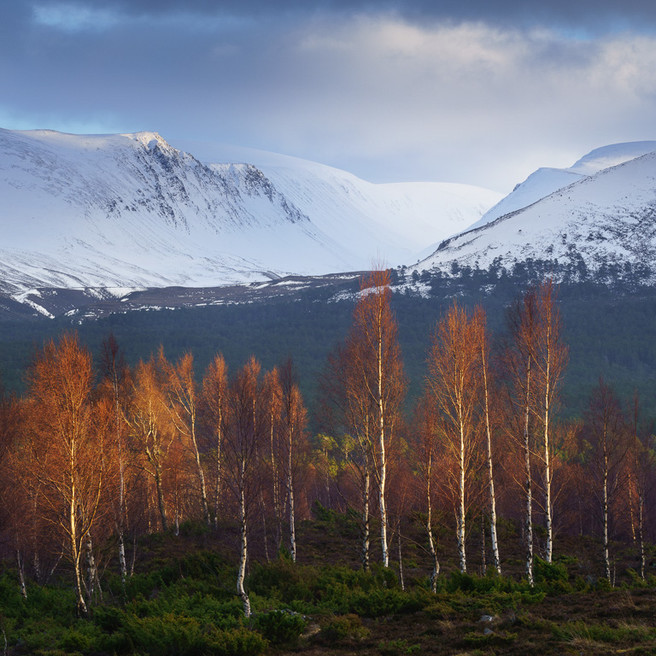
Birch and Mountains, Lairig Ghru, Joe Cornish Joe Cornish
Misty Birch
Because birch is quite often on open moorland or boggy ground, you can quite often encounter them in a nice early mist. The graphic silhouette of the drooping canopy of a silver birch is quite beautiful.
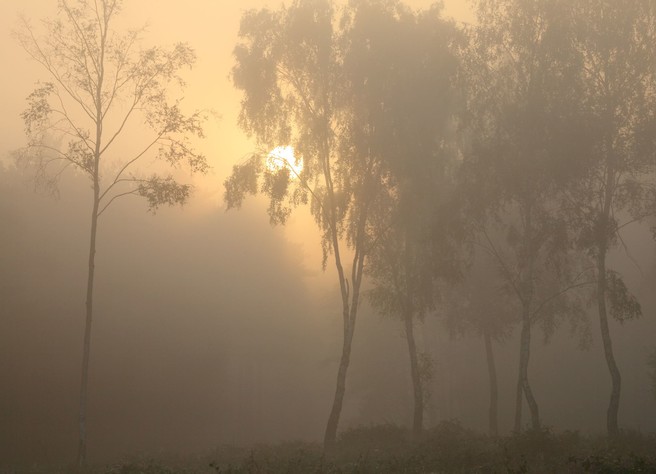
Birches in the Mist at Sunrise, The New Forest, Kevan Brewer, website
Frosty Birch
The fine branches of the birch pick up hoar frosts and the environment they tend to be found in is quite susceptible (see mists above). The appearance can be quite wonderful and the silver and black trunks contrast well.
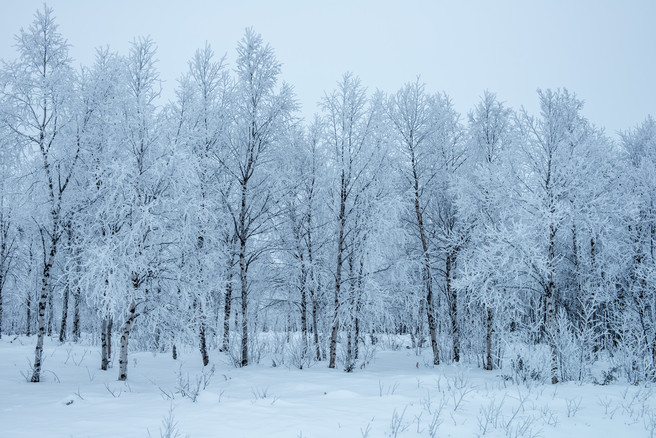
Frosted Birch Trees, Finland, David Moorhouse, Flickr
Bark Details
Of course, the bark is one of the unique qualities of the Birch and you can make the most of this by looking for areas of particular interest. Sometimes the bark will peel and show the surprisingly vibrant warmth of the inside layers (great to photograph at sunset on a clear day where the contrast of warm and cool can be used to good effect).
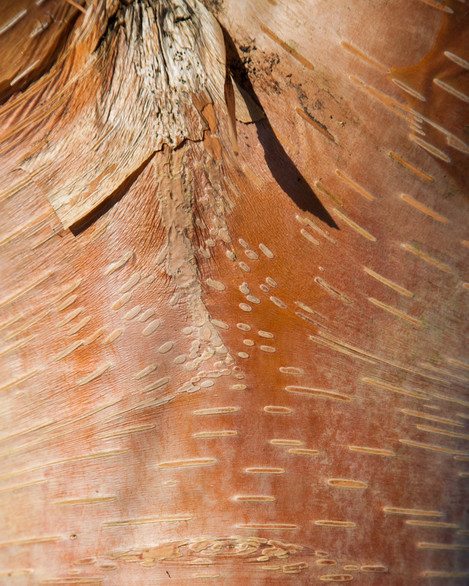
Betula Utilis, Dawyck Gardens, Scottish Borders, Brian Mahler, website

Birch and Rowan, Ballachulish, Tim Parkin website
Dead Birch Trees
Dead birch trees continue giving too, the bark remains beautifully silver because of its antifungal and antibacterial qualities whereas the wood rots and this quite often leaves reams of paper like detritus on the woodland floor. This is particularly beautiful when contrasted with other elements such as grasses or reeds.

Decaying birch logs, Kirkby Moor nature reserve, Lincolnshire, Peter Roworth, website
Lichen Encrusted Trees
For some reason lichens love to grow on birches and if you find the right conditions they growth can rival the southern states Spanish moss.
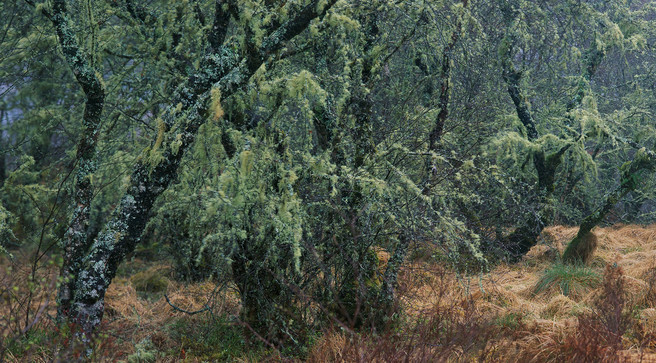
An Cnap, Salem, Ardnamurchan, Tim Parkin website
The Last Gasp of Autumn
At the end of Autumn, you’ll quite often find a last few golden leaves hanging onto the birch trees where all other leaves have vanished. The colour contrast between the drab pre-winter landscape and the white and yellow birch works well.
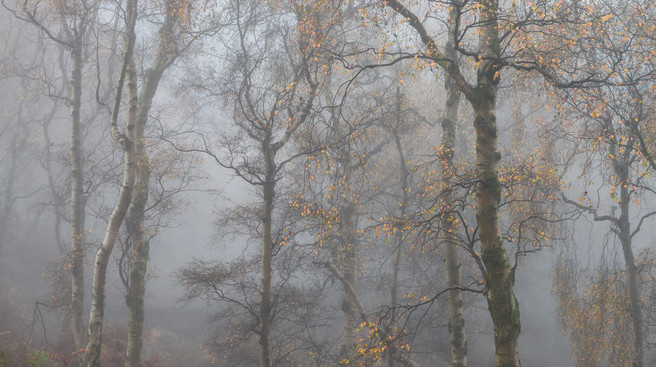
Autumn in the Peaks III, Bolehill Quarry, Roger Voller, website
The Movement of Birch
Many poems and a great deal of prose has been written describing the birches trembling boughs and we can make interest with this by using longer exposures. John Blakemore did just this in his work on wind where he took multiple shorter exposures to capture the wind’s work but keeping the glitter of the leaves.
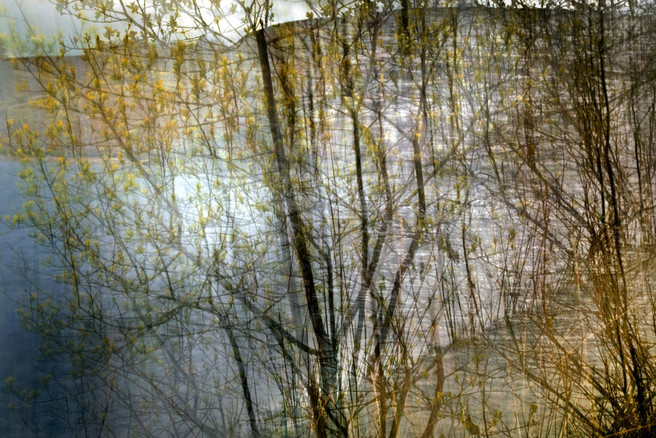
Goyt Valley, Peak District, UK, Peter Murray, website
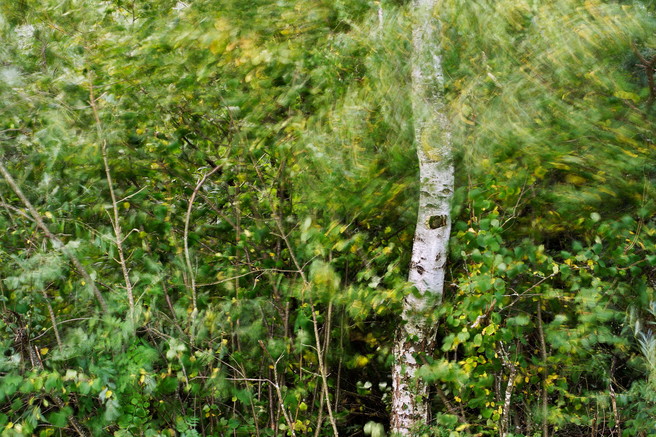
Birch tree in the wind, Chaumont, Haute Savoie, France, Patrick Morand, website
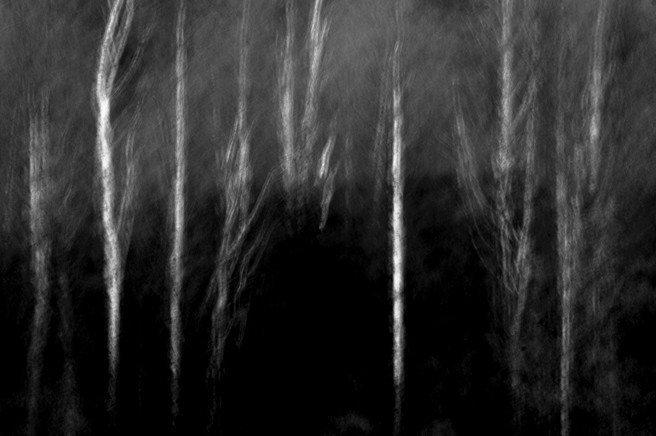
Winter birch, Crompton Moor, Oldham, Paul Adams, website
These are just a few ideas though - the nature of birch is that each can be quite distinctive and will change year on year.
Many thanks for all of the submissions for this article, it has been a great pleasure to see them coming in over the last couple of weeks. We’ve compiled them all into the following gallery.
- Birch Shadows, Yorkshire Wolds, Paul Moon, website
- Sutton Birches, Sutton Park, Sutton Coldfield, Andrew Page, website
- Sisters, Berkhamsted Common, Hertfordshire, Damian Ward, Flickr
- Alchemy, Hesworth Common, West Sussex, David Cundy, website
- Heather & Birch, Stanton Moor, Peak District, UK, Verity Milligan, website
- Havannah nature reserve, Newcastle upon Tyne, Tom White, website
- November woods, Haldon Forest, Devon, Steve Jupp, website
- Autumn Colour, Taken near Lochinver, Assynt, Scotland, Stephen Young, website
- Autumn in the Peaks III, Bolehill Quarry, Roger Voller, website
- Broken, Foulden Common, Norfolk, Paula Cooper, website
- Shepherds Crag Panorama, Shepherds Crag, Lake District, Rob Oliver, website
- Tangled, Bole Hill Quarry, Derbyshire, Rob Knight, website
- Fallen, Holme Fen, Cambridgeshire, Robin Jones, Facebook
- Doors of Durin, Munich (Starnberg) in Germany, Prashant Khapane, website
- Leaf Rush, Glen Feshie, Cairngorm NP, Scotland, Glenys Garnett, website
- Goyt Valley, Peak District, UK, Peter Murray, website
- Decaying birch logs, Kirkby Moor nature reserve, Lincolnshire, Peter Roworth, website
- ‘Trevethoe Farm’ from the series FARMED, The Lincolnshire Fens, Paul Hart
- Winter birch, Crompton Moor, Oldham, Paul Adams, website
- Ampthill Heath, Ampthill Heath, Bedfordshire, Darren Rose, website
- Lonely walk, The New Forest, Brockenhurst, Sandra Roberts, Flickr
- Flaming Birch Coigach, Scottish Highlands, Nick Mclaren, website
- Birch tree in the wind, Chaumont, Haute Savoie, France, Patrick Morand, website
- Mostly birch trees across the lake, Bradley Lake, Wasilla, Alaska, Ian Meades, website
- One Out Of Line, Haigh Plantations, Wigan, John Barton, Flickr
- Crowds, Bolehill Quarry, Peak District, Nigel Cooke
- Silver birch tree in middle of bluebell woods, Ardingly, West Sussex, England, UK, Lin Gregory, website
- Fallen, Bole Hill Quarry, Stuart Gregory
- Silver Birch, Bolehill Woods, Hathersage, Matt Lethbridge, website
- Silver Birch Mist-ery, Near Millstone Edge, Peak District, Martin Godfrey, website
- The Long and Winding Road Sallachy, Wester Ross, Margaret Smith, website
- Mausoleum Woods Birch, Mausoleum Woods, Lincolnshire, Louis Murphy, Flickr
- Birches in the Mist at Sunrise, The New Forest, Kevan Brewer, website
- Mythical Maze, Bole Hill Quarry, Peak District, Janet Salmon, Twitter
- The Unnamed Feeling, Stupca, Romania, Ionut HrenciucFacebook
- Padley Woods, David Collins, Flickr
- Birch and Mountains, Lairig Ghru, Joe Cornish website
- Shepherd’s Crag, Borrowdale, Tim Parkin website
- Birch tree portrait, Wimbledon Common, SW London, Ian Christie, Flickr
- A matched pair in the drizzle, Shore of Loch na Dal, Sleat, Skye, Iain Houston
- Bunchberry & Birch, Kvaløya, Arctic Norway, Harvey Lloyd-Thomas, website
- Birches, Rocks, Lichen, Bole Hill, Peak District, Eli Pascall-Willis, website
- Frosted Birch Trees, Finland, David Moorhouse, Flickr
- Birch and Rowan, Ballachulish, Tim Parkin website
- Beauty of the Highlands, Isle of Skye, Davorin Mance, Facebook
- Bolehill, Peak District, Tim Parkin website
- Bolehill Quarry,Bole Hill, Hathersage, Peak District, James Grant, website
- Betula Utilis, Dawyck Gardens, Scottish Borders, Brian Mahler, website
- Tolcher Trees – Way below zero, New Forest, Baxter Bradford, website
- Hushed, Knettishall Heath in Suffolk, Lee Acaster website
- An Cnap, Salem, Ardnamurchan, Tim Parkin website
- Bolehill Birch and Millstone, Bolehill, Peak District, Alastair Ross, website
- Afon Lledr, N. Wales, Alan Stewart Flickr
- We four, Borrowdale-Derwentwater. Adam Pierzchala. Flickr
- From King’s How, Borrowdale, Joe Cornish website
- Alaska, Ian Meades website

